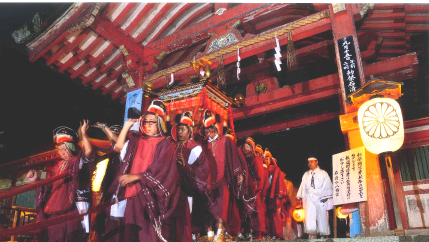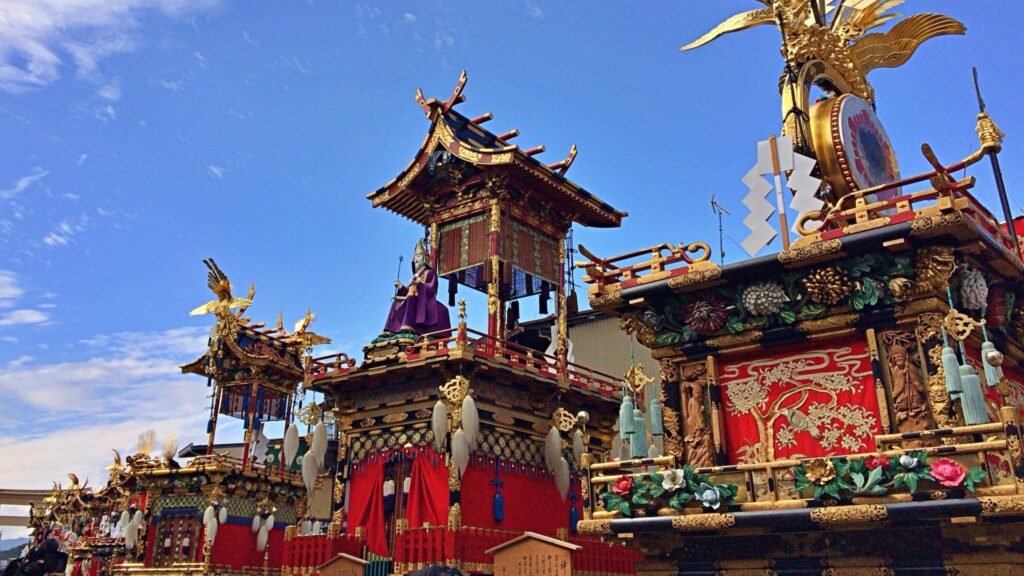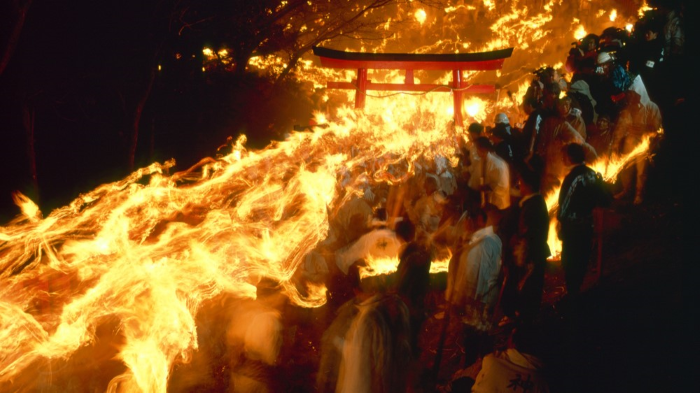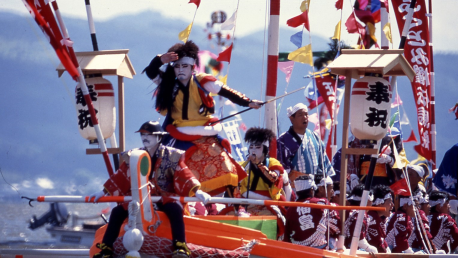Japan has a rich nature, surrounded by oceans, mountains, rivers, and changing seasons. The people have been in awe of various deities called "Kami", such as Kami of the mountain, Kami of forests, Kami of winds, and Kami of rice, as spiritual beings that possess supernatural power beyond human understanding, such as blessings and threats to nature. People welcome "Kami", make offerings, recite Shinto prayers, and express gratitude to "Kami."
The Three Chokusai Festivals
Chokusai Festival: An imperial envoy from the court prays on behalf of the emperor for the safety of the nation and the prosperity of the people.
Kasugasai (March 13)

The Kasugasai has been celebrated for over 1,300 years since its establishment in 768. The Imperial Envoy transports the table bearing the offerings to the first hall, where he presents them and delivers the Emperor's message.
(Source: NDL Digital Collections)
Aoi Matsuri (May 15)

The Aoi Matsuri is a Shinto ritual of Kamigamo and Shimogamo Shrines with a history of over 1,400 years. The main attraction is a large parade on May 15 with more than 500 people dressed in the style of the Heian period.
(Source: 京都フリー写真素材集)
Iwashimizusai (September 15)

The inception of the Iwashimizusai traces back to 863, and it’s aptly known as a "Moving Classic," an evocative reenactment of a beautiful dynastic possession in the Heian period.
(Source: (一社)八幡市観光協会)
The Three Great Festivals in Kyoto
Aoi Matsuri (May 15)

The Aoi Matsuri is a Shinto ritual of Kamigamo and Shimogamo Shrines with a history of over 1,400 years. The main attraction is a large parade on May 15 with more than 500 people dressed in the style of the Heian period.
(Source: 京都フリー写真素材集)
Gion Matsuri (July)

The Gion Matsuri is a Yasaka Shrine ritual held during July. The main attraction is the 34 Yamahoko Floats Procession held on July 17 and 24. Yoiyama is attractive to see the floats as the sun sets, and the lanterns are lit.
Jidai Matsuri (Oct 22)

The Jidai Festival is held on October 22. A large parade dressed in authentic costumes representing a 1100-year history from the Heian to the Edo period. About 2,000 people walk from the Kyoto Imperial Palace to the Heian Jingu Shrine.
(Source: KYOTOdesign)
The Three Great Dashi Float Festivals
Takayama Festival

Several large ornate floats called “Yatai” are drawn on April 14-15 and October 9-10. In front of the shrine, the Karakuri dolls on the floats perform subtle and impressive movements in dedication to the deities.
Kyoto Gion Festival

The Gion Matsuri is Yasaka Shrine ritual held during July. The main attraction of the 34 Yamahoko Floats Procession is held on July 17 and 24. Yoiyama is attractive to see
Nagahama Hikiyama
The Major Strange Festivals
Onbashira Matsuri

Large tree pillars down the slope in a single bound. Onbashira Matsuri is Suwa Taisha Shrine's sacred ritual ceremony held once every seven years, with more than 1200 years of history.
Oto Matsuri (Feb 6)

Around 2,000 men clad in white attire rush down the 538 steps from the summit to the base of Mt. Kamikura while carrying torches. Oto-Matsuri is Kamikura Shrine's sacred ritual festival held for over 1800 years.
The Three Major Shinto Boat Festivals
Horan-Enya Festival

Horan Enya festival - an intangible folk cultural asset -, about 100 boats with traditional dancers wearing colorful, splendid costumes sail through the rivers in Matsue
Tenjin Festival
Osaka Tenmangu Shrine
Kangen-sai Festival
Itsukushima Shrine
